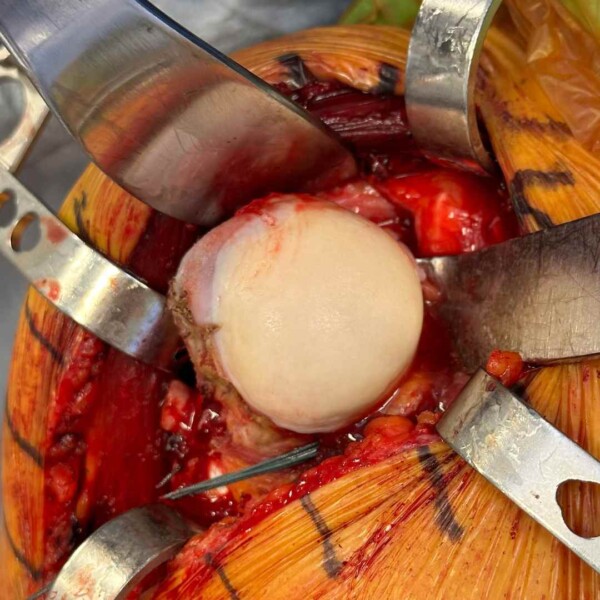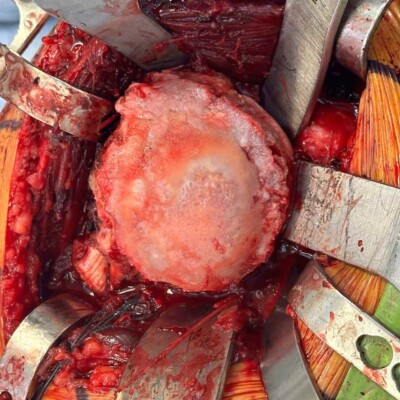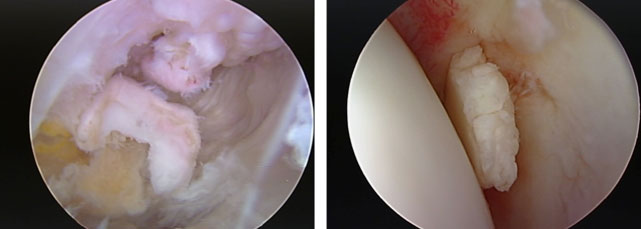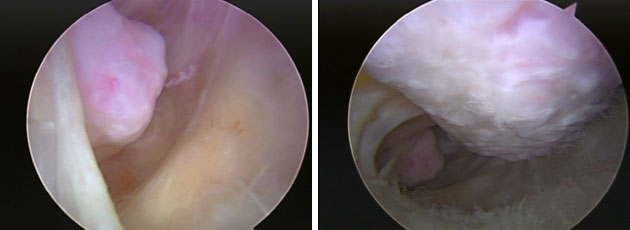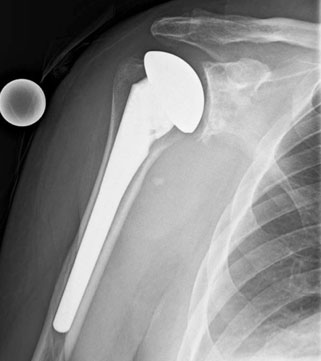Shoulder Arthritis Overview
Shoulder arthritis is a common source of chronic shoulder pain and shoulder disability that affects more than 20% of the older population. There are 2 distinct joints in the shoulder area that can be affected by arthritis—the AC joint (acromioclavicular), which is where the collarbone (clavicle) meets the tip of the shoulder bone, and the glenohumeral joint where the upper arm bone (humerus) meets the shoulder blade (scapula). Damage to the cartilage surfaces is usually the primary cause of shoulder arthritis.
What are the Types of Shoulder Arthritis?
- Osteoarthritis: This degenerative shoulder condition is commonly referred to as "wear-and-tear" arthritis because the smooth outer coverage (articular cartilage) is essentially destroyed. Osteoarthritis usually affects people over 50 years of age and is very common in the AC shoulder joint (although it is not always symptomatic) and fairly common in the glenohumeral joint.
- Rheumatoid Arthritis: This arthritis can affect a person of any age and usually affects multiple joints on both sides of the body. For example, in addition to affecting the shoulder, the knee and ankle might also show signs and symptoms of rheumatoid arthritis. Rheumatoid arthritis is an autoimmune, inflammatory condition of the joint lining.
- Post-Traumatic Arthritis: Post-traumatic arthritis is a form of osteoarthritis that develops after an injury, such as a fracture or dislocation of the shoulder. This type of arthritis can also develop in the glenohumeral joint after a chronic rotator cuff tear.
What are the symptoms of Shoulder Arthritis?
The most common symptom associated with arthritis of the shoulder is pain. Arthritis-related shoulder pain can range from instances of long, mild pain, to periods of intense, sharp shoulder pain. The pain is almost always intensified and aggravated by activity and progressively worsens.
Depending on which joint is affected by arthritis, the pain may be felt in the center of the back of the shoulder (if the glenohumeral shoulder joint is affected), whereas pain will typically be focused on the top or front of the shoulder if the arthritis is in the AC joint. Patients with rheumatoid arthritis will have pain in both areas and a change in weather will usually intensify the discomfort.
Limited range of motion or stiffness and difficulty lifting, reaching or stretching the arm can also be symptoms of shoulder arthritis. Mechanical symptoms such as clicking, snapping, or popping can also be present. As the disease progresses, any movement of the shoulder can cause pain. Night pain is common and sleeping may be difficult.

How is Shoulder Arthritis treated?
Non-Surgical Treatment
There are many treatment options for shoulder arthritis. Many patients can live with the symptoms for years and will only need to take pain medications such as anti-inflammatory drugs, or they can receive cortisone shots to help relieve shoulder arthritis symptoms. Physical therapy exercises also help to preserve motion and strength. For others who experience chronic shoulder arthritis symptoms and whose shoulder arthritis continues to worsen, surgery is available.
Surgical treatment
Treatment decisions are based upon the cause, the intensity of the symptoms, and the severity of the patient's disease. Each year, over 50,000 shoulder replacement surgeries are performed in the United States to relieve pain and improve function for shoulders that are severely damaged by glenohumeral arthritis.
Arthritis in the very early stages can be controlled and treated with arthroscopic techniques. During this procedure, Dr. Millett will trim out the inflamed synovial lining tissue and remove pieces or fragments of degenerated cartilage. Arthroscopic treatment for shoulder arthritis will not cure the arthritic condition, but it will prolong more drastic measures and relieve many symptoms for a while.
In more severe shoulder arthritis conditions, Dr. Millett has developed a new joint preservation procedure called the CAM procedure. CAM is an acronym for Comprehensive Arthroscopic Management, which is a very precise combination of surgical procedures aimed at treating all the major pain generators. The CAM procedure can be performed in young, active patients with arthritis who wish to preserve their shoulder joints or in older patients who wish to avoid joint replacement surgery. Although minimally invasive, the CAM procedure is very technically demanding and is not performed widely at other surgical centers. Nevertheless, the clinical results have shown decreased pain, improved function, and good durability, without the need for total joint replacement.
When the arthritis is end-stage or in other instances where the joint can no longer be salvaged, joint replacement surgery may be the best option. Joint replacement, also known as total shoulder replacement or arthroplasty, has been around for many years and Dr. Millett has performed several hundred of these procedures.
Shoulder replacement surgeries are among Dr. Millett's favorite procedures to perform because the results are very predictable and the pain relief is so complete. Shoulder replacement surgery is highly effective at eliminating pain and restoring function so that patients can return to activities of daily living and sports such as skiing, tennis, and golf. During this procedure, the joint is surgically replaced through an incision in the front of the shoulder, and a metal ball and plastic socket are inserted to recreate the damaged joint. Only one muscle is split during the procedure, allowing for a smoother recovery with less tissue damage. Full recovery with return to unrestricted activities can be expected by 3 to 4 months.
Before a treatment plan can be put into place, Dr. Millett will need to examine your shoulder and review various imaging studies such as X-ray's and MRI's to determine the cause of the shoulder arthritis and the stage of advancement. He can then discuss the various treatment options with you and help develop the best course of treatment given your particular circumstances and goals.
For additional resources on shoulder arthritis, please contact the office of Dr. Peter Millett, orthopedic shoulder specialist serving patients in Vail, Aspen and the surrounding Denver, Colorado communities
Related Articles
Am I Candidate for Shoulder Replacement Surgery?
What is my Alternative to Shoulder Replacement Surgery?
What are my Treatment Options for Shoulder Osteoarthritis?
What Options Exist for Young Patients with Osteoarthritis of the Shoulder?

